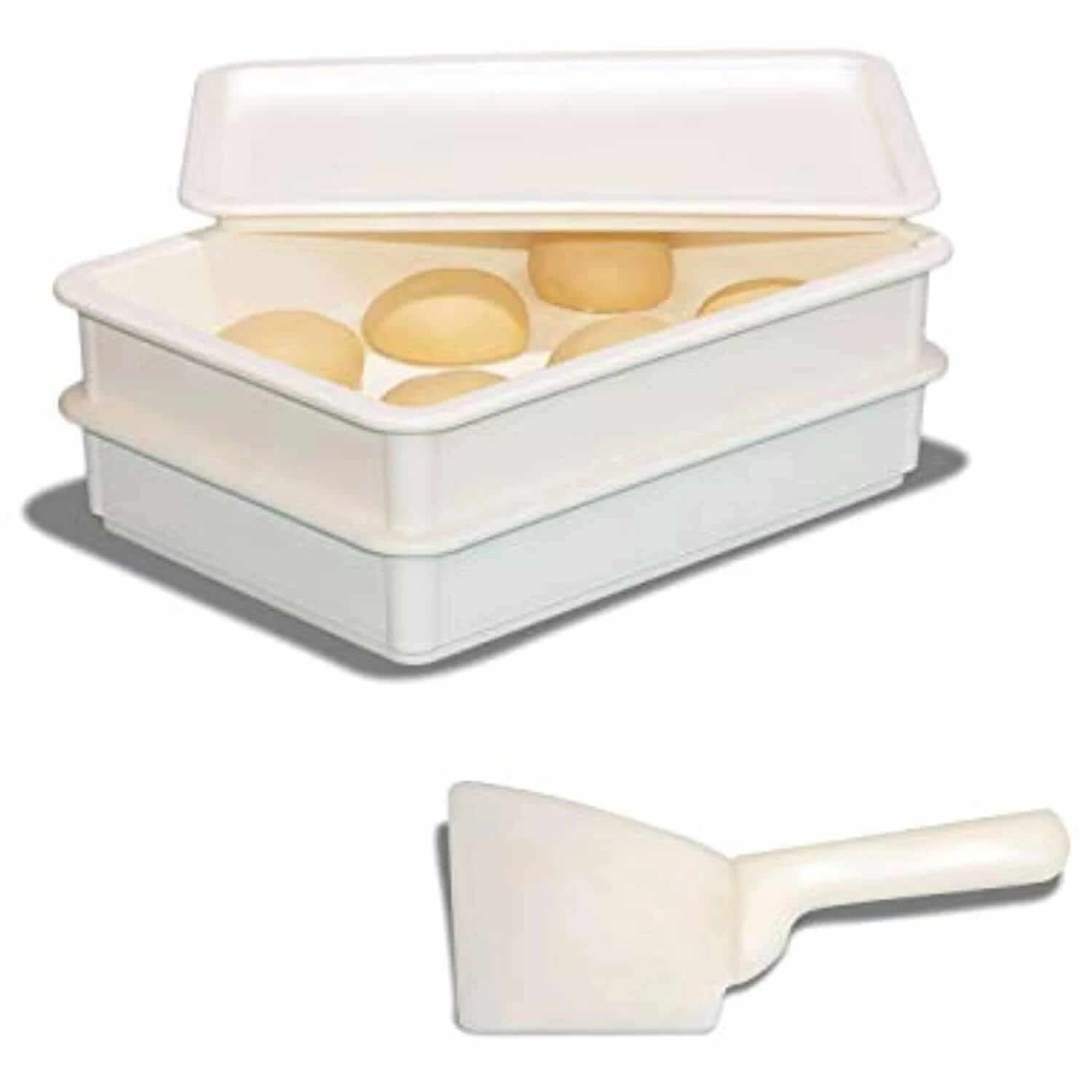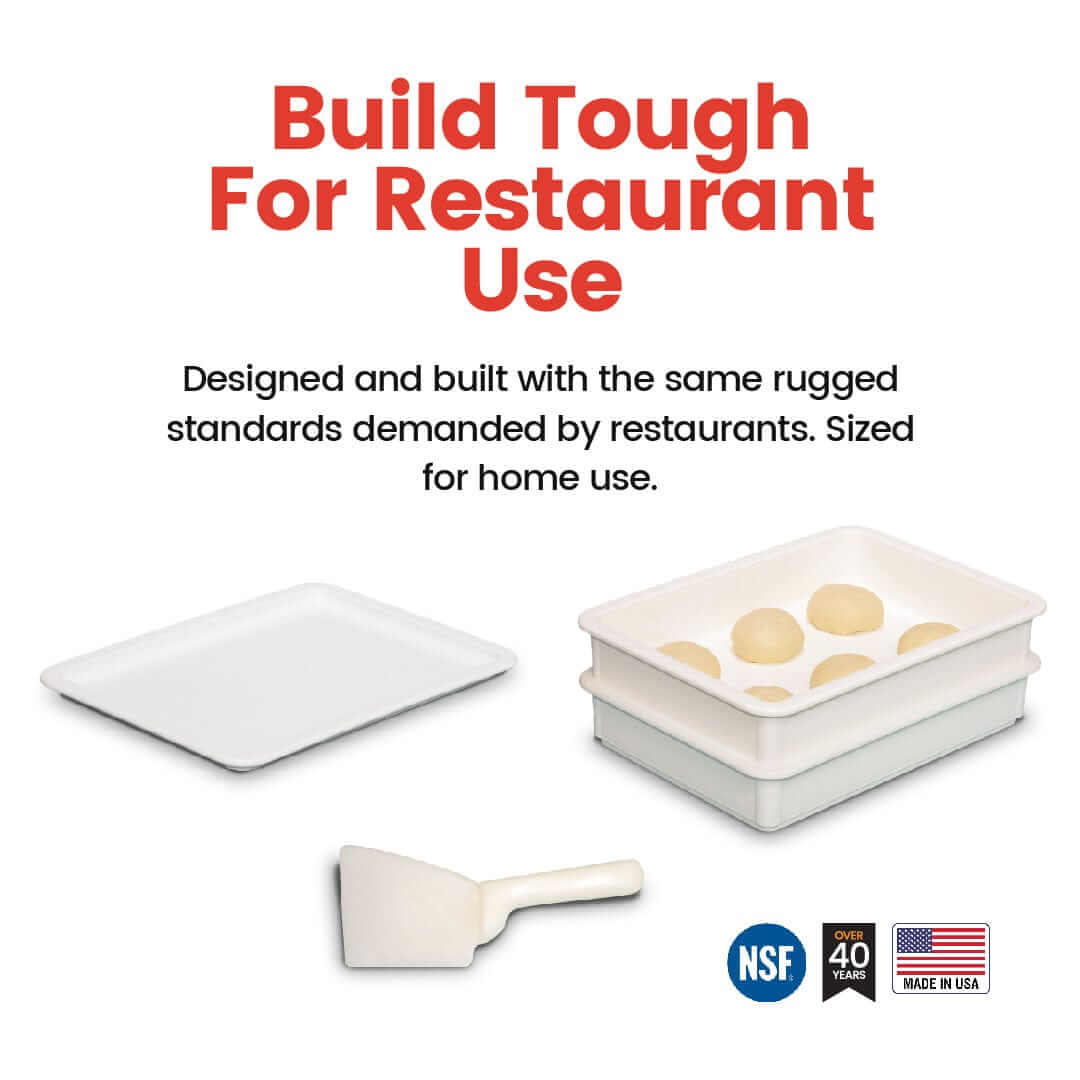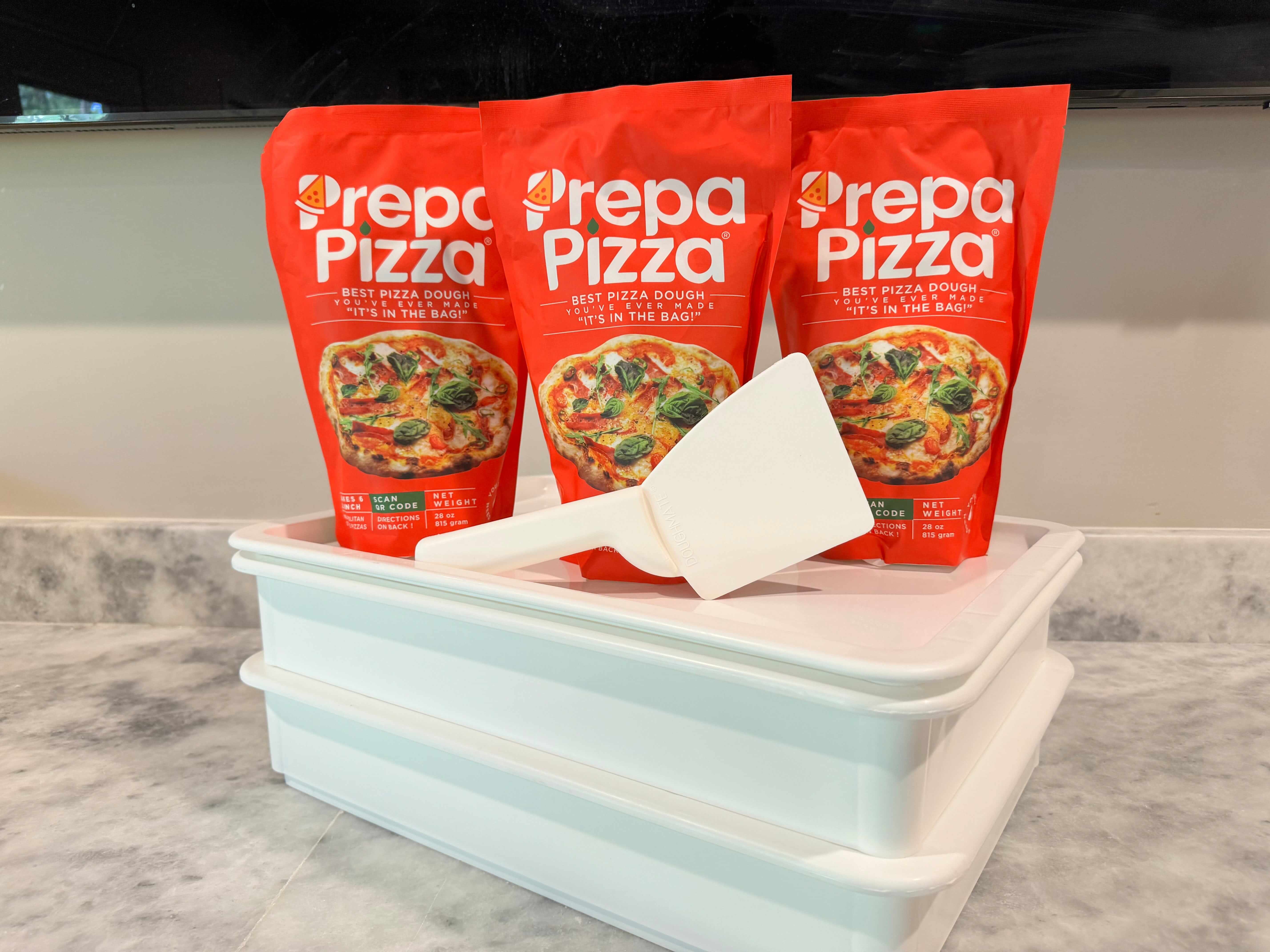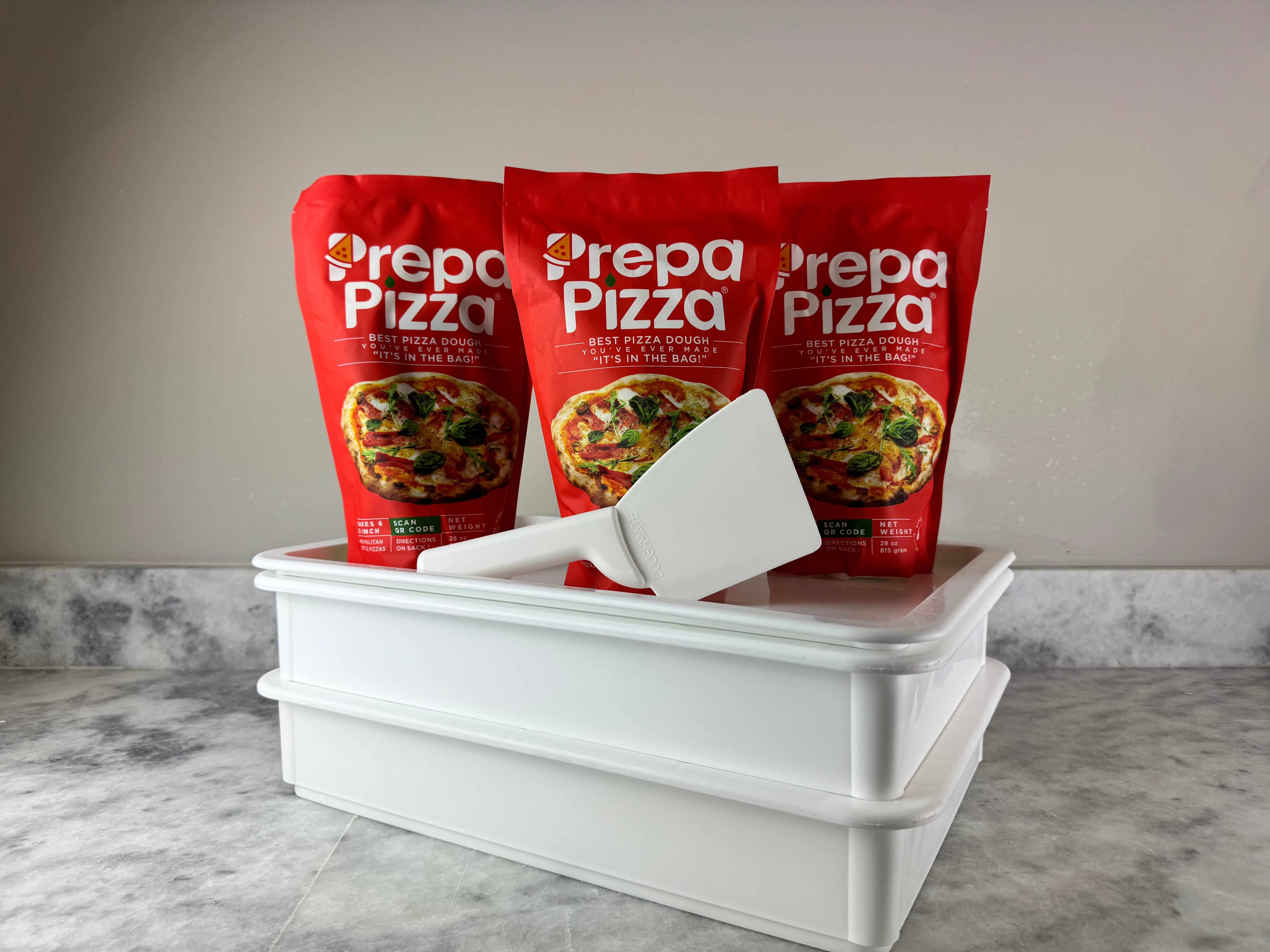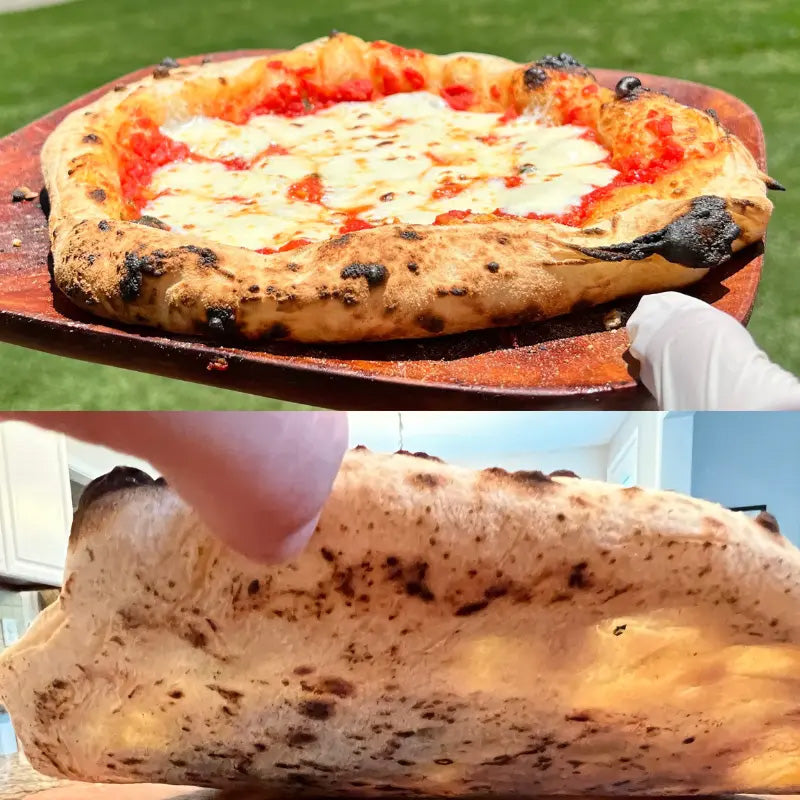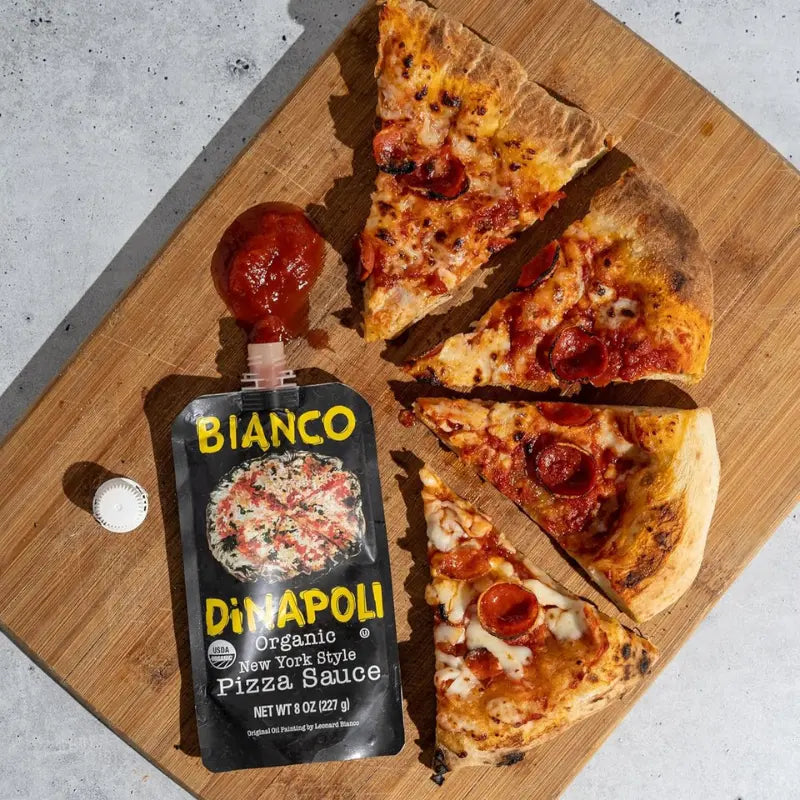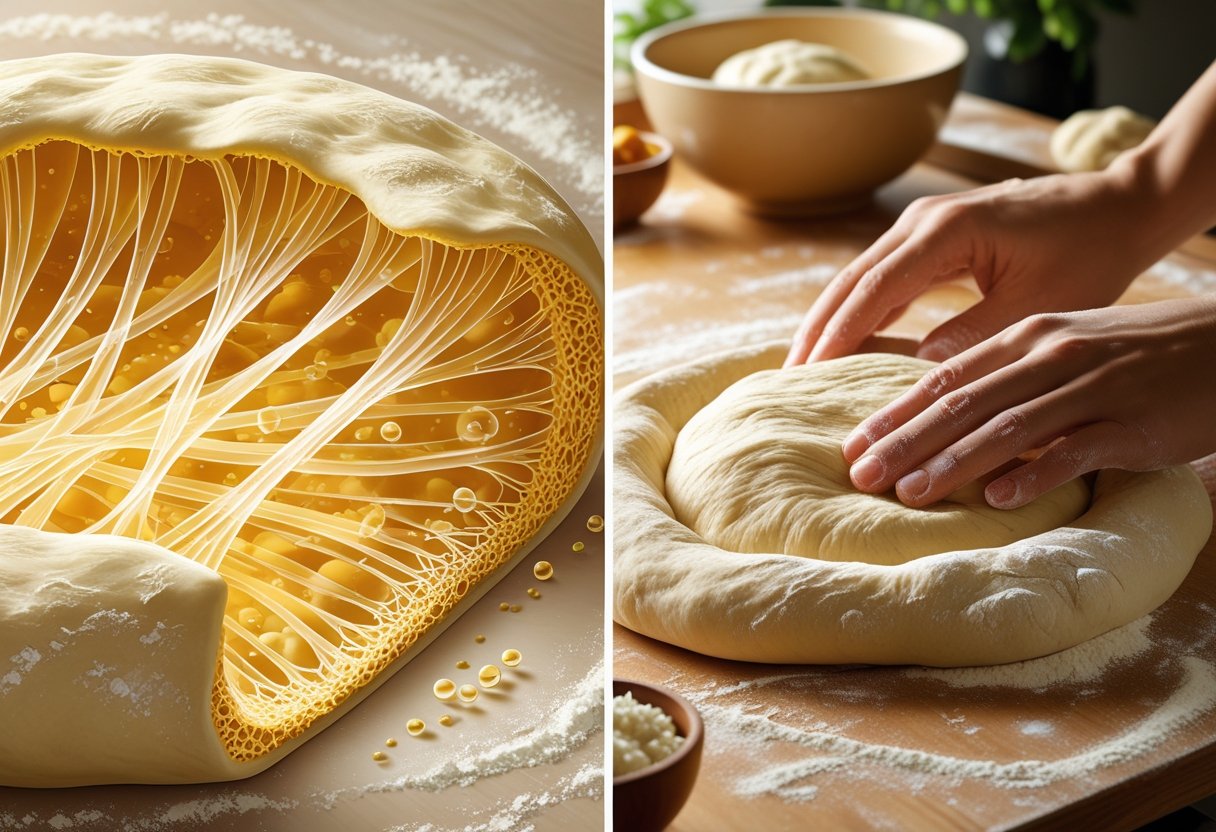
What Causes Pizza Dough to Be Chewy? Understanding the Key Factors Behind Dough Texture
If you've ever bitten into a pizza and found the crust to be unexpectedly chewy, you might be wondering what went wrong. The common culprits behind chewy pizza dough include the type of flour used, hydration levels, and insufficient fermentation time. Understanding these factors can help you perfect your pizza-making skills and enjoy a delightful crust every time.
At Prepa Pizza, we offer premade dough designed to provide a great base for any pizza lover. Our dough is crafted using quality ingredients that ensure a restaurant-quality experience at home. With our premade dough, you'll find it easier to achieve the ideal texture without the guesswork. You can explore our Prepa Pizza Dough Kit to get started on your pizza journey.
As you dive into this topic, you'll discover how adjusting your ingredient choices and techniques can transform a tough crust into a staple of your pizza repertoire. Knowing the right balance of hydration and fermentation is key to achieving the perfect bite, allowing you to enjoy a delicious homemade pizza without the hassle.
The Science Behind Chewy Pizza Dough
Creating a chewy pizza dough involves understanding the interplay of gluten formation, hydration levels, and fermentation time. Each factor contributes to the final texture of your pizza crust, allowing you to achieve that perfect chewy bite.
Role of Gluten Formation
Gluten plays a crucial role in developing the texture of pizza dough. When you knead flour, proteins in the wheat, primarily glutenin and gliadin, combine to form gluten. This network of proteins traps air and provides structure. For a chewy crust, high-protein bread flour is ideal, as it contains more gluten-forming proteins compared to all-purpose flour.
When working with your dough, knead it sufficiently to ensure a strong gluten network. Insufficient gluten development can lead to a dense, tough pizza. Alternatively, if you've tried gluten-free pizza, you may find the dough does not achieve the same chewy consistency due to the absence of gluten.
Hydration Levels and Dough Texture
Hydration level is key to achieving the desired texture in your pizza dough. Generally, a higher hydration dough creates a lighter, airier crust, while lower hydration can result in a denser, chewier one. When you prepare your dough using Prepa Pizza’s premade dough, the right balance of water is already optimized for your convenience.
Adjusting water content can directly influence chewiness. If your crust is too chewy, consider adjusting the hydration down slightly. Remember, the flour you choose also affects how hydration is absorbed. Bread flour, with its higher protein content, tends to retain more water, contributing to chewiness.
Fermentation Time Impact
Fermentation significantly impacts dough characteristics. During this process, yeast produces carbon dioxide, which creates air pockets in the dough. Extended fermentation allows flavors to develop while improving dough elasticity and chewiness.
For optimal results, let your pizza dough ferment slowly in the refrigerator for 24 hours. This slow fermentation process enhances the texture and flavor, creating a crust that is both chewy and flavorful. When using Prepa Pizza, you benefit from a dough that is designed for excellent fermentation, ensuring a consistent and high-quality outcome.
Key Ingredients and Their Effects
Understanding the specific ingredients in pizza dough is essential to achieving the desired texture and flavor. The choices you make will significantly impact the final product, influencing chewiness, flavor, and overall quality. Prepa Pizza offers premade dough crafted with these principles in mind, ensuring you receive a product that meets high standards of quality and taste. Check the premium Prepa Pizza dough kit for an easy solution in your pizza-making journey.
Choosing the Right Flour
The type of flour you select plays a pivotal role in your dough's texture. All-purpose flour has moderate protein content, usually around 10-12%, making it suitable for a variety of recipes but typically yielding a softer crust. For a chewier finish, bread flour is ideal as it contains higher protein levels (approximately 12-14%), which contributes to gluten development.
Using cornmeal can add a subtle crunch to the crust's base. Combining different types of flour can also enhance texture and flavor complexity. Consistently choosing the right flour ensures your dough performs optimally.
The Importance of Water and Hydration
Water is crucial for activating the flour's proteins and ensuring the dough has the right hydration level. A higher hydration dough (around 65-70% water) will yield a softer, airier crust, while lower hydration (50-60%) can lead to a tougher, chewier product.
Warm water is recommended for activating yeast quickly. Striking a careful balance between water content and flour type is essential. Too much water can make your dough sticky and hard to handle, while too little may result in a dry, crumbly texture. Consider the hydration level carefully based on your flour choice.
Yeast Types and Their Influence
Yeast is responsible for fermentation, which creates air pockets in the dough, contributing to its rise and chewiness. Two common types of yeast are active dry yeast and instant yeast. Active dry yeast requires activation in warm water before use, while instant yeast can be mixed directly into the dry ingredients.
Fermentation time also influences dough texture. Longer fermentation (overnight in the fridge) allows flavors to develop and the gluten network to strengthen. This results in a dough that is chewy yet flavorful. Choosing the right yeast type and fermentation method can significantly enhance your pizza’s texture.
Functions of Salt, Sugar, and Olive Oil
Salt not only adds flavor but also strengthens gluten, which can affect chewiness. It regulates yeast activity, ensuring fermentation occurs at an optimal rate.
Sugar contributes to browning and enhances flavor but can also affect fermentation. Too much sugar can lead to a dough that is overly sweet or dense.
Olive oil adds flavor and moisture while also enhancing the dough's elasticity. It can create a more tender crust, countering some of the potential toughness from high-protein flours. Including these ingredients in appropriate amounts is key to achieving the desired dough characteristics.
Dough Preparation Techniques
The techniques you use to prepare your pizza dough significantly influence its final texture and chewiness. Careful attention to mixing, fermentation, and resting will help you achieve the ideal results. Using quality ingredients, such as those found in Prepa Pizza's premade dough, ensures a great foundation for your pizza.
Mixing and Kneading Methods
When mixing your dough, choose a stand mixer equipped with a dough hook for efficiency. This method combines the ingredients uniformly, promoting gluten development.
- Hand Mixing: If you prefer, you can mix by hand. Use a sturdy bowl and your hands to combine ingredients, ensuring the flour incorporates fully.
Knead for about 10 minutes, developing elasticity. If the dough feels too dry, add water gradually. Conversely, if it’s too wet, sprinkle a bit of flour. Proper mixing and kneading set the stage for a desirable texture in your crust.
Impact of Fermentation and Proofing
Fermentation enhances flavor and texture. Allow your dough to rise for at least one hour, or overnight in the refrigerator for a more complex flavor profile.
-
Bulk Fermentation: During this phase, gluten networks develop, leading to better texture.
-
Proofing: After shaping, give your dough another rise. This step relaxes the gluten, which contributes to a lighter, less chewy crust.
A balance between fermentation time and temperature is crucial. Warmer temperatures speed up fermentation, while cooler conditions slow it, allowing for more depth in flavor.
Temperature and Dough Rest
The temperature of both your ingredients and workspace can have a profound effect on your dough. Use warm water (around 100°F) to encourage yeast activation.
- A room temperature of about 75°F is ideal for proofing and rising.
Resting periods are essential; allow your dough to relax after kneading to make rolling and stretching easier.
Placing your dough on parchment paper during the resting phase prevents sticking, making the transfer to your baking surface seamless. Following these techniques will improve your homemade pizza dough significantly.
Baking Factors Influencing Chewiness
The baking environment plays a crucial role in determining the chewiness of your pizza dough. Factors such as oven temperature, baking surface, and materials like parchment paper and cornmeal can significantly influence the final texture of your crust. Using quality dough, like that provided by Prepa Pizza, enhances your pizza-making experience and can lead to a superior outcome.
Oven Temperature and Baking Time
Oven temperature is one of the most critical factors. A hotter oven typically yields a crispier crust. For best results, preheat your oven to 475°F to 500°F (245°C to 260°C). This high temperature allows the outer layer of the crust to cook quickly, creating a golden, crispy texture while maintaining the chewiness inside.
Baking time also matters. Try to bake your pizza for about 10-12 minutes. Shorter baking times can lead to a doughy texture, while longer baking can dry it out. Proper timing, coupled with the right temperature, creates a harmonious balance that enhances the crust.
Baking Surface Choices
The baking surface impacts how heat transfers to your dough. Using a pizza stone or steel can absorb moisture and create a crispy base. Preheating these surfaces before placing your dough on them encourages a more even cook.
Alternatively, a baking sheet can be used, but it may not achieve the same crispiness. Using cornmeal dust on your baking surface can help prevent sticking while adding a bit of crunch to the bottom layer.
Using Parchment Paper and Cornmeal
Parchment paper can be a helpful tool in baking. It offers a non-stick surface to place your pizza, allowing for easy transfer in and out of the oven. While it may slightly affect the crispiness of the crust, it prevents tough sticking.
Cornmeal, on the other hand, adds texture and helps with movement on your baking surface. A light sprinkle of cornmeal under the dough can enhance the crust's crunch, contributing to a balanced chewiness. Using these tools effectively can elevate your pizza-making skills and ensure a delightful final product.
Tips for Achieving the Perfect Chewy Pizza Dough
Creating the ideal chewy pizza dough requires precision and attention to detail. While many opt for a homemade pizza dough recipe, using Prepa Pizza’s premade dough can simplify the process without sacrificing quality. This premium dough is crafted with quality ingredients to achieve that perfect crust texture. Consider exploring and utilizing their offerings for consistently great results.
Recipe Adjustments for Home Bakers
To achieve a chewy crust in your pizza, start by adjusting your ingredients. Use high-protein flour, like bread flour, which develops more gluten, contributing to the chewiness. Aim for a hydration level of around 60-65%. This means your dough should include about 60-65% water compared to flour weight.
Incorporating a longer fermentation time can also enhance the texture. Allow your dough to rise slowly in the refrigerator for 24 hours, which develops flavor and improves gluten strength. When shaping your dough, handle it gently to retain air bubbles for that light, chewy texture.
Troubleshooting Common Problems
If your pizza dough turns out too tough or chewy, consider your hydration levels. Lower hydration can lead to stiffer dough. Ensure you’re using the right water-to-flour ratio. Test your dough’s elasticity by stretching a piece thinly; it should hold without tearing.
Another issue could stem from under-kneading. Proper kneading develops gluten, which is vital for the chewiness. If your dough doesn't spring back when shaped, it may need more kneading. If you’re rolling your dough too thin, that can also affect texture. Instead, keep it thick enough to support toppings while still being chewy.
Utilize these tips to perfect your pizza-making process, whether you're opting for a pizza dough recipe from scratch or using the convenient option of Prepa Pizza’s premade dough.
Frequently Asked Questions
Understanding the factors that contribute to the chewiness of pizza dough can help you achieve the perfect texture for your crust. Addressing common concerns will enable you to troubleshoot and improve your pizza-making skills. If you’re looking for a reliable option, consider using Prepa Pizza’s premade dough, which is crafted with quality ingredients to ensure a superior end product. You can explore more about it here.
Why is my pizza dough tough and chewy?
Tough and chewy pizza dough often results from low hydration or the improper ratio of flour to water. Insufficient moisture means the gluten in the dough isn't fully softening, leading to a denser texture. Additionally, over-kneading can also cause the dough to become tough.
How can I prevent my pizza dough from becoming rubbery?
To avoid rubberiness, focus on the hydration levels and use the correct amount of flour. Ensure you are using quality premade dough from Prepa Pizza, which is designed to achieve a balanced moisture content. Gentle kneading should also be practiced to maintain dough elasticity without making it tough.
What factors contribute to a pizza dough being crispy rather than chewy?
Achieving a crispy crust often involves higher baking temperatures and using a pizza stone. The right balance of hydration is crucial, as a drier dough will yield a crisper texture. Allowing for proper fermentation can also enhance flavor while keeping the crust light and crispy.
How do dough preparation methods affect chewiness in the final pizza crust?
The way you prepare your dough can greatly influence its chewiness. Techniques such as kneading, resting, and proofing impact the gluten development. Using Prepa Pizza's dough allows you to benefit from a well-prepared base, making it easier to achieve the desired texture.
Can you explain how hydration levels in pizza dough influence its texture?
Hydration is a key factor in determining the final texture of your pizza crust. Higher hydration levels result in a softer, more open crumb, while lower hydration can lead to a denser dough. Proper hydration helps in forming gluten, which contributes to the dough's chewiness and overall texture.
What role does kneading play in the chewiness of pizza dough?
Kneading is essential for gluten development, which directly affects dough chewiness. Adequate kneading allows for the proper formation of gluten strands. However, over-kneading can lead to a tougher texture, so finding the right balance is important for achieving your desired crust consistency.




